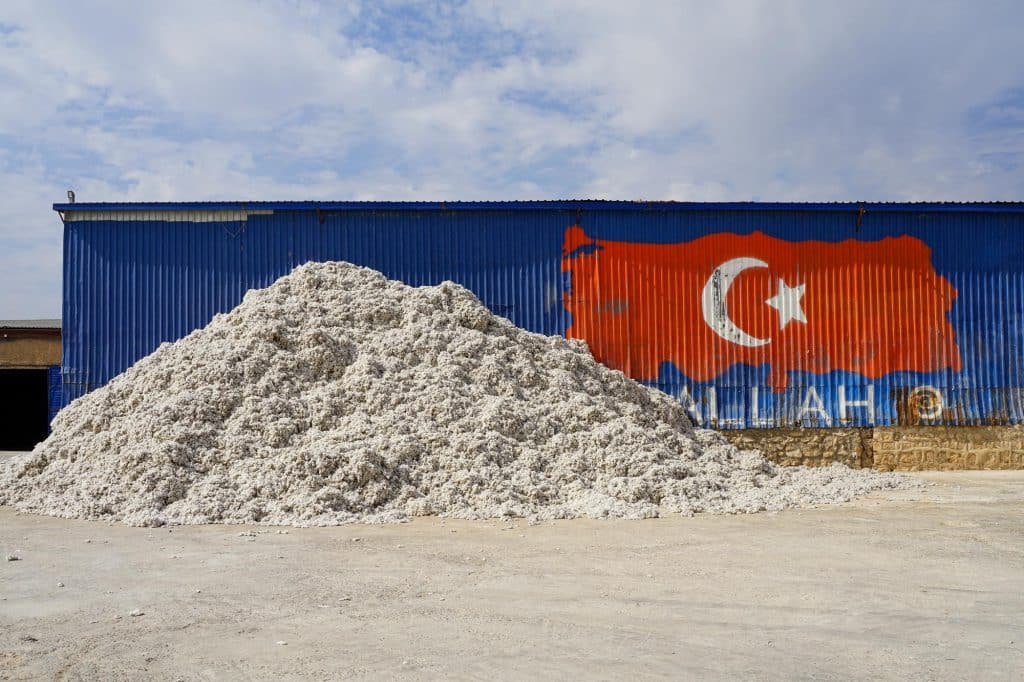Our Traceability Journey Continues: Expanding to Australia
A key cotton-producing country with a strong track record of innovation and sustainability in agriculture, Australia is the latest step in our traceability journey.
Read moreA key cotton-producing country with a strong track record of innovation and sustainability in agriculture, Australia is the latest step in our traceability journey.
Read more
We are pleased to announce that our Senior Director, Data and Traceability, Alia Malik, has joined the International Cotton Association (ICA) as a new board member. The ICA is an international cotton trade association and arbitral body and was set up 180 years ago in 1841 in Liverpool, UK.
The mission of ICA is to protect the legitimate interests of all those who trade cotton, whether buyer or seller. It has more than 550 members from around the world and it represents all sectors of the supply chain. According to the ICA, the majority of the world’s cotton is traded internationally under ICA Bylaws & Rules.
I am delighted to join the board of one of the oldest organisations in the sector. Trade is crucial to driving demand for more sustainable cotton, and I am looking forward to contributing to ICA’s work
Comprising 24 board members, the new board “continues to represent the ICA’s global membership across all sectors of the supply chain and builds on its commitment to engage the entire global cotton community.”
Read more about the new ICA leadership team here.
Read more

By Nick Gordon, Traceability Programme Officer, Better Cotton
Cotton can be one of the most challenging commodities to trace. The geographical journey of a cotton t-shirt can span three continents before it reaches the shop floor, often changing hands seven times or more. Agents, intermediaries and traders operate at every stage, providing fundamental services from assessing quality to linking farmers and other players to markets. And there’s no one clear path – cotton bales from different countries can be spun into the same yarn and sent to multiple different mills to be woven into fabric. This makes it challenging to trace the cotton in any given product back to its source.
To enable the physical tracing of cotton, Better Cotton is developing its own traceability capability through the existing Better Cotton Platform, set to launch in late-2023. To support this, we’ve created a series of supply chain maps to better understand the realities of key cotton trading countries. We’ve used data insights, stakeholder interviews, and the experiences of local supply chain actors to shed light on how things work in different countries and regions, and identify the key challenges to traceability.
Central to the programme will be our evolving Chain of Custody Standard (which is currently out for public consultation). This will prompt operational changes for manufacturers and traders alike. It’s vital the Standard acknowledges regional variation and is achievable for suppliers in the Better Cotton network. We’ll keep applying the knowledge and lessons we’re learning to ensure any changes meet the wants and needs of Better Cotton stakeholders.

It’s no secret that enabling traceability is more straightforward in larger, vertically integrated supply networks. The fewer times material changes hands, the shorter the paper trail, and the greater likelihood of being able to trace cotton back to its source. However, not all transactions are equally documentable, and the reality is that informal work acts as a crucial support mechanism for many smaller actors, connecting them with resources and markets.
Traceability should empower people who are already often marginalised by global supply chains and protect smallholders’ access to markets. Engaging with stakeholders and responding to their needs and concerns is a critical first step in making sure these voices don’t go unheard.
New, innovative technology solutions are available for use in the cotton supply chain – everything from smart devices and GPS technology on farms to state-of-the-art integrated computer systems on the factory floor. However, not all actors in the sector – many of whom are smallholder farmers or small to medium-sized businesses – have embraced technology to the same extent. When introducing a digital traceability system, we need to consider varying levels of digital literacy, and make sure any system we introduce is readily understandable and easy to use, while also fitting the needs of users. In particular, we’re conscious that the gaps are greatest at the early stages of the supply chain, among cotton farms and ginners, for example. Yet it’s precisely at these stages that we need the most accurate data – this is essential to ensuring physical traceability.
Better Cotton will be testing two new traceability platforms in an India pilot this year. Prior to roll out of any new digital system, capacity building and training will be crucial.

The impact of the pandemic, coupled with challenging economic conditions, are changing behaviours in cotton supply chains. For example, in light of fluctuating cotton prices, yarn producers in certain countries are replenishing stocks at a more cautious pace than others. Some suppliers are concentrating on long-term supplier relationships, or searching for new supply networks. Predicting how much customers might order is becoming less easy, and for many, margins remain low.
Amid this uncertainty, the opportunity to sell physically traceable cotton could offer a market advantage. So, in the same way that cultivating Better Cotton helps farmers to achieve better prices for their cotton – 13% more for their cotton than conventional cotton farmers in Nagpur, according to a Wageningen University study – traceability also presents a real opportunity to create further value for Better Cotton Farmers. For example, carbon insetting frameworks, underpinned by a traceability solution, could reward farmers for implementing sustainable practices. Better Cotton is already engaging with all stakeholders across the supply chain to understand the business case for traceability and identify ways to increase value for members.

The biggest change to Better Cotton’s Chain of Custody model in over a decade is coming, and we want you to help us shape it.
In late 2022, a new Chain of Custody (CoC) Standard—previously called the “CoC Guidelines”—will make important changes to the requirements that apply to all registered organisations operating in the Better Cotton supply chain.
In consultation with key stakeholders, Better Cotton periodically reviews and revises its CoC requirements to ensure its ongoing relevance, ability to connect demand with supply of Better Cotton, and support and incentivise farmers to adopt more sustainable practices.
The public consultation on the new CoC Standard is now live and is expected to conclude on 25 November 2022.
The proposed new standard is based on the final recommendations made by Chain of Custody Task Force that has worked to examine and recommend changes to version 1.4 of the CoC Guidelines in order to provide opportunities to physically trace Better Cotton. The Task Force includes Better Cotton’s member representatives from across the supply chain, including retailers and brands, ginners, spinners and traders.
Among other proposed changes, the draft introduces three new traceability models (in addition to Mass Balance): Segregation (Single Country), Segregation (Multi-Country) and Controlled Blending. Management system requirements have been harmonised, making it possible for suppliers to operate multiple CoC models at the same site.
This is your opportunity to shape improvements to the CoC, and ensure it is practical and achievable. Better Cotton needs to understand how ready supply chains are for this change, what support is needed, and whether the CoC Standard is feasible for suppliers.

A new report published by Transformers Foundation investigates the use – and misuse – of data on the sustainability of the cotton sector, and aims to equip brands, journalists, NGOs, consumers, suppliers and others with the skills and understanding to use data accurately and transparently.
The report, Cotton: A Case Study in Misinformation debunks some of the commonly-shared ‘facts’ about cotton and textile production, such as the idea that cotton is an inherently ‘thirsty crop’, or the amount of water required to create a t-shirt. It also addresses commonly-cited claims about the use of pesticides in cotton farming. In both cases – water and pesticides – the report aims to provide current and accurate claims along with advice on how to use them without misleading audiences.
Damien Sanfilippo, Better Cotton’s Senior Director, Programmes contributed to the report and is quoted throughout:
“Everybody has an interest in data. And that’s good, because it means that everybody has an interest in sustainable development. But using data correctly is a skill. Right? And it needs to be done in a scientific manner.”
The authors end with a set of calls-to-action, including to:
Read the report here.
Transformers Foundation ‘represents the denim supply chain: from farmers and chemical suppliers to denim mills and jeans factories’.
Read more